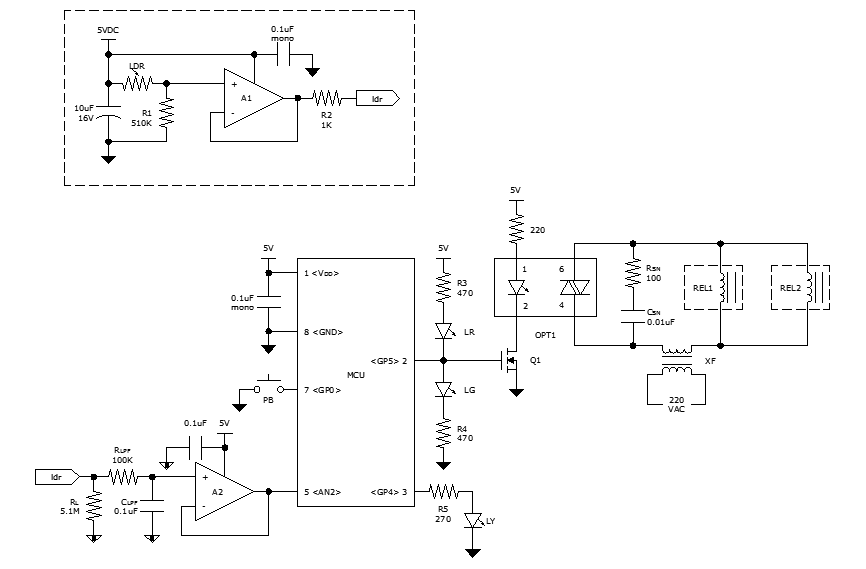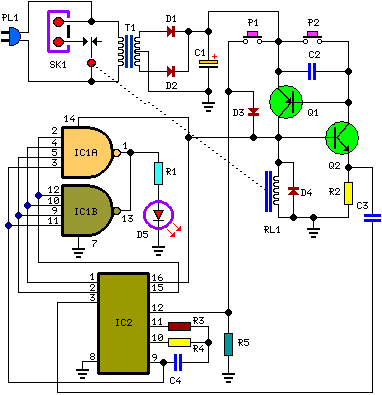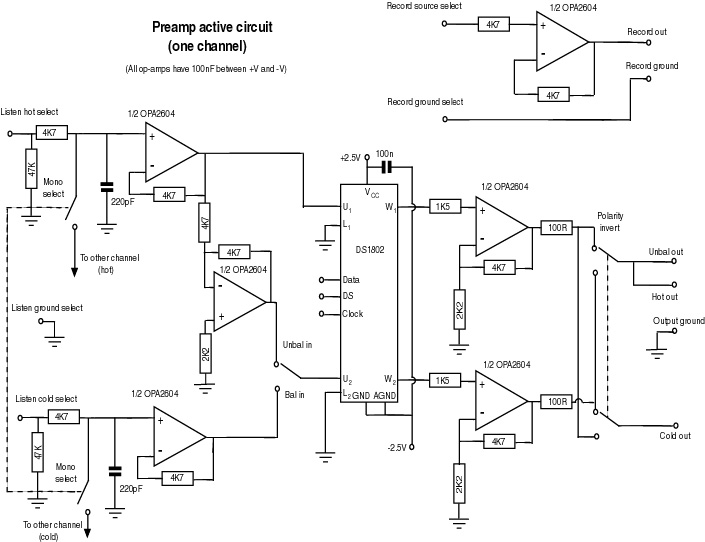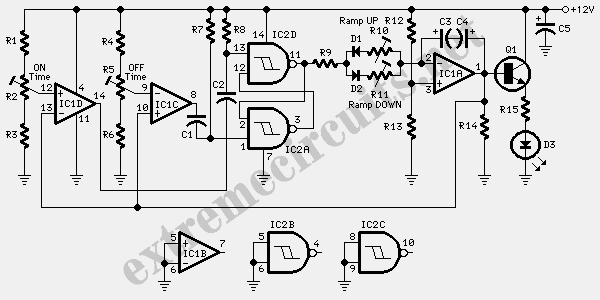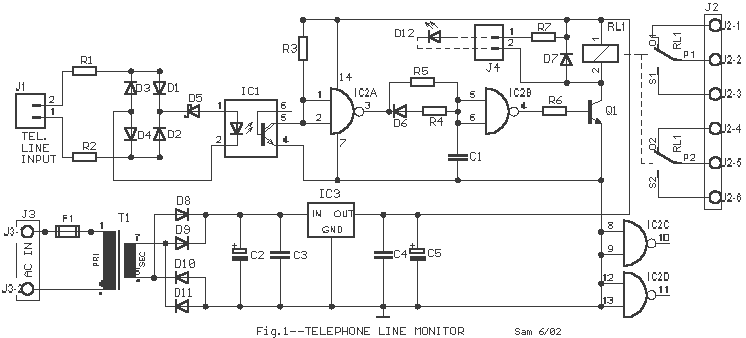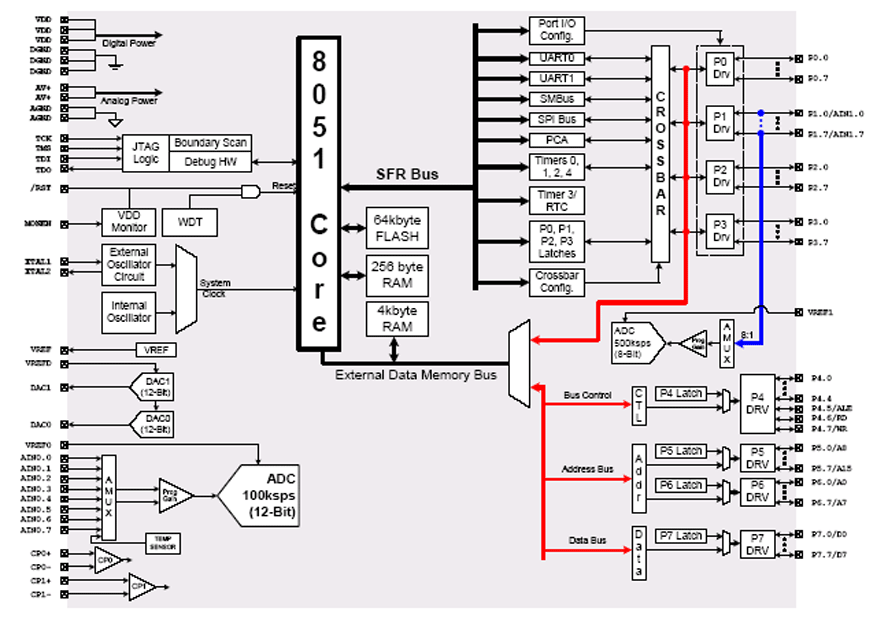
Universal motor control with built in self timer
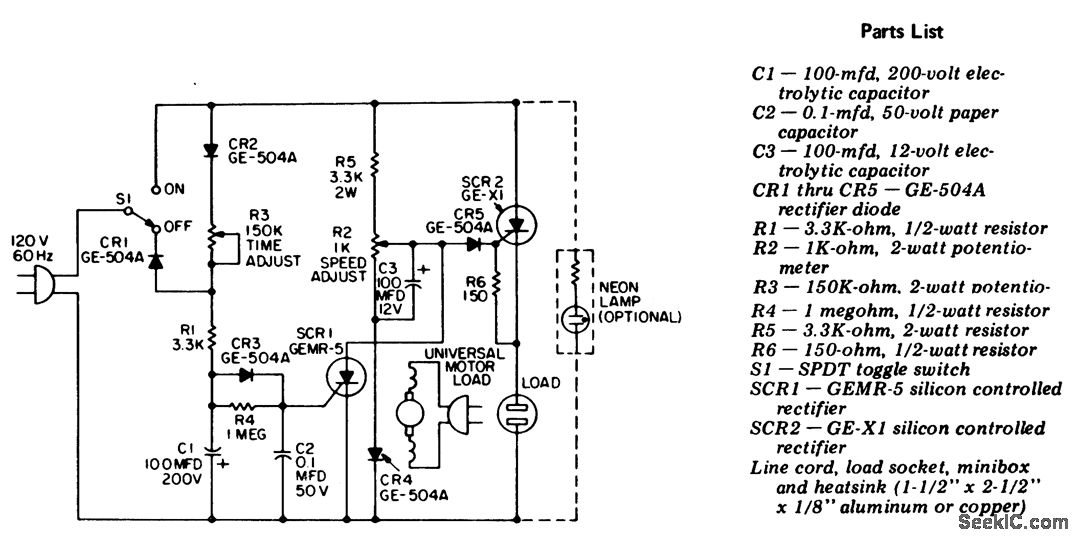
Universal motor control with an integrated self-timer. This circuit is designed exclusively for use with motors that have commutators. When expecting heavy motor loads, it is advisable to replace the GE-X1 with a larger-rated C30B SCR for SCR2. To extend the time delay, increase the capacitance of capacitor C1 (courtesy of General Electric Company).
The universal motor control circuit described operates by regulating the power supplied to a commutator motor, allowing for precise control over the motor's speed and operation time. It incorporates a self-timer feature, which automatically disconnects the motor after a predetermined period, thus preventing overheating or damage due to prolonged operation.
The circuit typically includes a silicon-controlled rectifier (SCR) configuration, with SCR1 and SCR2 managing the power flow to the motor. SCR1 is responsible for the initial control, while SCR2 can be upgraded to a higher-rated component, such as the C30B SCR, to accommodate motors under heavy loads. This enhancement is critical for ensuring the reliability and longevity of the circuit when dealing with high current demands.
The timing mechanism is achieved through the use of capacitor C1, which, when adjusted, alters the time delay before the motor is turned off. Increasing the capacitance of C1 will extend the delay period, allowing for longer operational times before automatic shutdown occurs. This feature is particularly useful in applications where the motor must run for a specific duration without manual intervention.
Overall, this circuit provides a robust solution for controlling universal motors, with the flexibility to adapt to various operational requirements through component selection and configuration adjustments.Universal motor control with built-in self-timer. Use this circuit only with motors having commutators. If heavy motor loads are anticipated, use a larger-rated C30B SCR in place of the GE-X1 for SCR2. To increase the time delay increase the capacitance of 01 (courtesy General Electric Company). 🔗 External reference
The universal motor control circuit described operates by regulating the power supplied to a commutator motor, allowing for precise control over the motor's speed and operation time. It incorporates a self-timer feature, which automatically disconnects the motor after a predetermined period, thus preventing overheating or damage due to prolonged operation.
The circuit typically includes a silicon-controlled rectifier (SCR) configuration, with SCR1 and SCR2 managing the power flow to the motor. SCR1 is responsible for the initial control, while SCR2 can be upgraded to a higher-rated component, such as the C30B SCR, to accommodate motors under heavy loads. This enhancement is critical for ensuring the reliability and longevity of the circuit when dealing with high current demands.
The timing mechanism is achieved through the use of capacitor C1, which, when adjusted, alters the time delay before the motor is turned off. Increasing the capacitance of C1 will extend the delay period, allowing for longer operational times before automatic shutdown occurs. This feature is particularly useful in applications where the motor must run for a specific duration without manual intervention.
Overall, this circuit provides a robust solution for controlling universal motors, with the flexibility to adapt to various operational requirements through component selection and configuration adjustments.Universal motor control with built-in self-timer. Use this circuit only with motors having commutators. If heavy motor loads are anticipated, use a larger-rated C30B SCR in place of the GE-X1 for SCR2. To increase the time delay increase the capacitance of 01 (courtesy General Electric Company). 🔗 External reference
